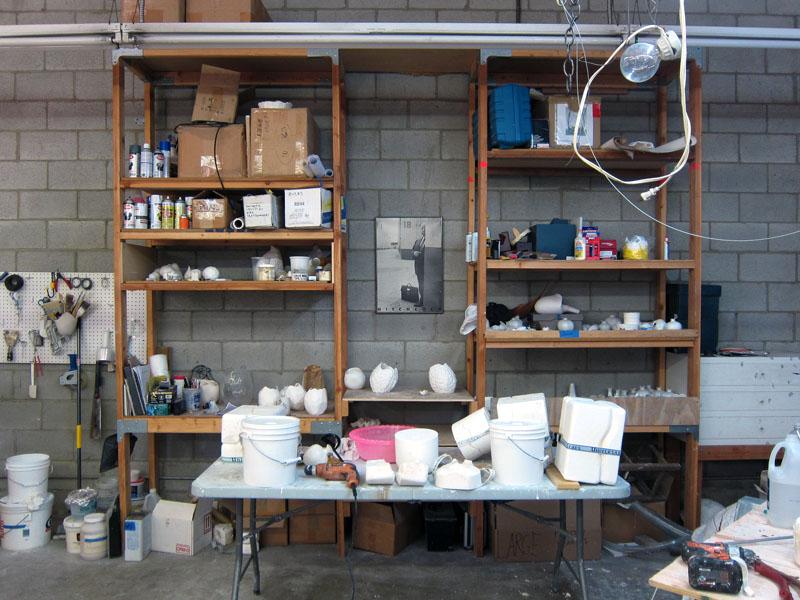
In the studio’s porcelain casting area, Wiseman keeps dozens of plaster molds and buckets of watered-down slip (which Marta narrowly avoided slurping down at several points during my visit). His primary process for porcelain is slipcasting, which involves pouring a cake batter–like clay into plaster molds and allowing it to sit for a period of time that will eventually determine the piece’s thickness. “Plaster is super dry and porous, almost like a sponge, so when you pour liquid clay in, whatever touches the plaster will form a dry layer. If you want a superthin casting, you leave it in for about three or four minutes; if you want something a bit thicker, maybe 20 minutes.”